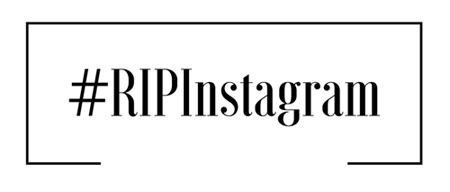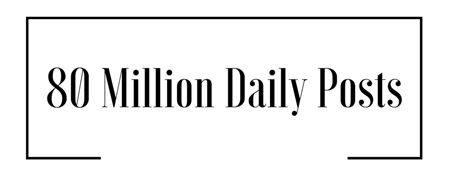Instagram is Still a Marketing Powerhouse: Tips for a Post-Algorithmic World

Instagram recently announced that, to improve the visibility of posts, it will be following in the footsteps of Facebook and Twitter, discarding its chronological feed and ordering users' posts algorithmically.
Instagram attributes this change to its continued growth, noting that as it expands, it becomes harder to keep up with the content users share, with 70 percent of content going unseen. Historically, the shift makes sense -- Instagram has already effectively leveraged Facebook's ad-focused mentality, utilizing their best practices, shared buys and targeting capabilities.
Even so, mirroring the sentiment Facebook has seen around its own initiatives, many Instagram users are outraged, driving the hashtag #RIPInstagram to global popularity. Despite this backlash, this change will ultimately benefit both consumers and marketers.

Instagram's algorithm will raise the bar for brands to publish stronger, more meaningful content that not only increases consumer engagement, but expands their overall reach. As Instagram ad engagement plummets, increased engagement on organic content will foster a new era of user interaction on the photo sharing network.
As these changes roll out in the coming months, Instagram will continue to offer marketers unique opportunities to delight new and returning examples. Looking to enhance your presence? Here's how to shine.
Quality Over Quantity
As Instagram's algorithm makes its debut, it's more important than ever for brands to generate engagement that will drive their content into users' feeds. Equipped with over 400 million users, Instagram has turned everyday consumers into amateur photographers and brand connoisseurs. Expectations for social experiences are higher than ever before. Consumers crave authenticity and want marketing to provide an accurate depiction of how a product or brand can provide value.
Traditionally, marketers looking for visibility on Instagram felt pressured to produce a surplus of content to ensure posts were seen on cluttered chronological feeds. Moving forward, brands can instead focus on the quality of content without dwelling on the amount produced.
With 80 million posts being uploaded each day, brands should seek user-generated photos of their products and, once they have secured permission, include them in posting strategy. Doing so allows prospective customers an inside look on how shoppers interact with offerings while boosting sales conversions and providing audiences with valuable, authentic content.

Brand Engagement
It is apparent that the rise in social media has successfully bridged the gap between brand and consumer, allowing marketers unprecedented access to audiences. And for the first time, shoppers were provided with a public means of reaching out to brands and other fans. However while consumer engagement is great, interaction is a two-way street. To harness the full social potential of Instagram, brands should readily respond to comments shared on their photos and engage in conversation on images posted by fans. The more a brand converses with consumers on user-generated content, the more likely fans are to return the favor.
When a brand encounters exceptional user-generated content (UGC), consider asking for explicit permission to use to image in marketing collateral. Whether an image is reposted on a branded Instagram page, leveraged in an email marketing campaign or showcased on an ecommerce gallery, brands will not only have authentic visual content to share, but an opportunity to forge long-lasting relationships with these customers. Strong marketing assets are especially important because the consumer purchase journey has lengthened significantly, with consumers engaging with 11.4 pieces of content prior to making a purchase.
Maintain a Strategic Frequency
Algorithm or no algorithm, to maintain an active audience, brands should be consistent with the cadence of posts. Many marketers, however, struggle with the pace they need to create relevant content. A great way to stay on top of scheduling is to devise an editorial calendar, allotting a handful of photos per week, and defining the variety of content shared. Depending on your industry, some themes to weave into an editorial calendar can include shots of products; exclusive sneak peeks of new designs; creative uses of offerings; images of brand ambassadors and representatives; and a behind the scenes look. The wealth of UGC also lends brands a helping hand, providing quality content without draining financial or creative resources.
Though change is often frightening for brands and consumers alike, the introduction of Instagram's algorithm will bring forth new opportunities for brands to foster meaningful connections with their customers. As we say goodbye to chronological feeds, Instagram users are brought a step closer to the content they love, ringing in the next exciting chapter in social engagement.
Subscribe to Our Newsletter!
Latest in Social Media









